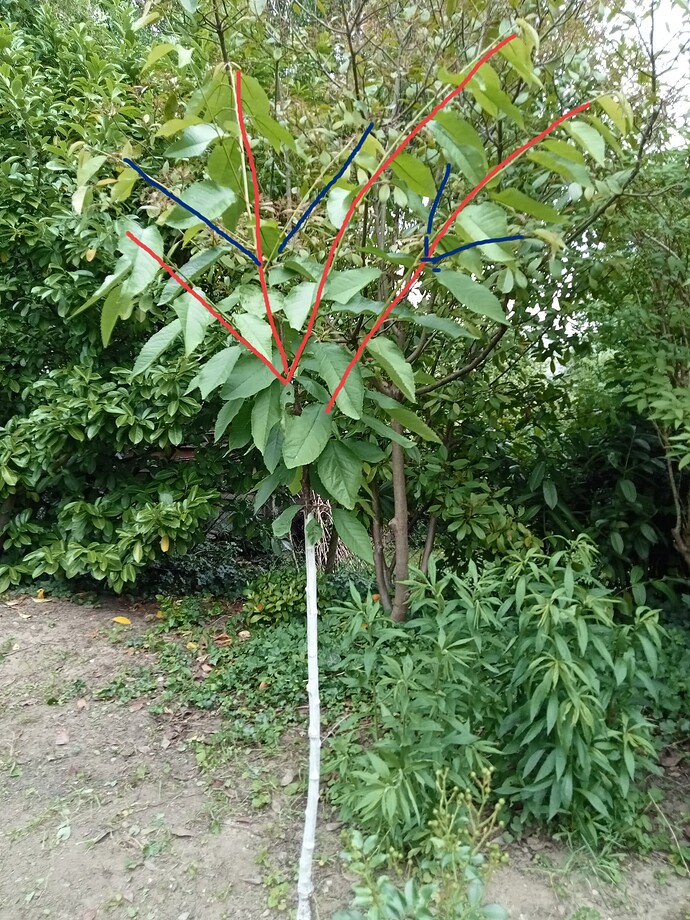I’m seeing that hardiness zone 8a in the United States is characterized by relatively cold winters (with light winter frosts) and warm summers, which is exactly what cherry trees like.
Let’s start with the Colt rootstock.
It’s a rootstock I have because I receive cherry trees from various nurseries in Central Europe grafted onto Colt, but I can’t plant them in my orchard due to one problem: it’s a rootstock that requires a lot of irrigation.
As for Colt, it’s a rootstock that adapts well to all soil types.
Now for your questions about structure training systems (KGB or Spanish Bush).
I have cherry trees trained with both types of structure , and I almost prefer the Spanish Bush system.
The question you have is that since you have very hot summers, you have to do pruning to shape the tree’s structure during the vegetative stage, during spring and summer. You’re afraid that high temperatures will slow the tree’s growth and prevent it from responding well to summer pruning, but that’s not how it works.
Traditionally, pruning to shape the tree’s structure was done in winter during the dormant stage, but it was found that doing it this way took the tree at least 10 years to enter production. For this reason, the cherry tree’s response to pruning during the vegetative stage was studied, and very interesting results were obtained. Pruning during the vegetative stage reduces the time it takes for the tree to form its structure and enter production to 4 or 5 years.
Therefore, pruning during the winter dormancy stage is considered weakening and induces fruiting once the tree is formed. Pruning during the vegetative stage is considered invigorating, as the tree responds to the cutting of each branch by producing at least two or three new branches per cut.
Tips to keep in mind:
-
When a young tree is a single shoot and taller than one and a half meters, it must be decapitated at a height of between 40 and 50 centimeters, and it will respond to this pruning by producing at least three primary branches.
-
The first pruning of the primary branches will be very short, taking the highest branch as a reference, cutting it to 15 centimeters (leaving at least 3 or 4 buds below the cut for sprouting), and aligning the remaining branches at that cut height.
Don’t trust tutorials that indicate that branches can be pruned when they are 60 centimeters long. It’s better to let them grow a little longer, up to 70 centimeters, as these branches will be more vigorous and will respond to pruning by producing more shoots, which is what you’re aiming for.
When pruning during the vegetative stage, it’s necessary to water well. If you have a fertilizer with amino acids or seaweed extracts, apply them during the watering process, as they help promote faster sprouting.
Ask any questions you may have.
Best regards
Jose

